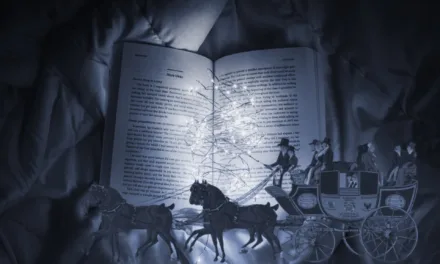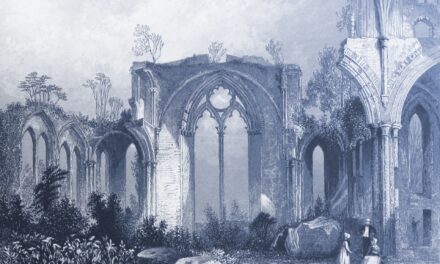
How do you write middle-grade fiction?

“I’m going to be honest to the point of embarrassment: I’ve always wanted to write books for children in the style of Laura Ingalls Wilder, Little House Books. How do you write in a way that will connect with younger readers?”
First of all, there is nothing to be embarrassed about! Middle-grade fiction holds a special place in many readers’ hearts. They’re the books we read when we first really find our joy of reading. When we discover our tastes, and become passionate about the stories we consume.
While typically aimed at children, usually aged 8-12, middle-grade fiction speaks to a wide audience because it captures the magic, challenges, and wonder of our transformative pre-teen years. They explore themes like friendship, family dynamics, self-discovery, and growing independence, while keeping content age-appropriate, but those themes of self-discover are evergreen.
Unlike young adult fiction, middle-grade books generally avoid romantic subplots, graphic violence, and complex adult themes. They’re fast-paced books with a writing style is clear and engaging, making them accessible for younger readers while maintaining depth and narrative sophistication.
But writing effectively for this age group requires understanding their unique perspective and needs, combined with an effort not to talk down to your readers. There’s a reason why so many middle-grade books are popular with both children and adult-readers alike (one of my favourite book series of all time, for instance, is the Lockwood & Co. series by Jonathan Stroud, which falls firmly in the middle-grade camp).
Know your audience
Middle-grade readers are in a fascinating developmental stage. They’re old enough to tackle complex ideas but still firmly rooted in childhood. They’re beginning to question the world around them while developing stronger friendships and peer relationships than they may have had earlier in their education.
At this age, children start to form their own identities and can follow longer storylines. They will have started with chapter books a few years earlier, but by age 8-12 they’re often ready to tackle much more involved plots and stories. Many readers of middle-grade fiction, whether they’re younger or older than its target audience, appreciate the beautiful balance between reality and fantasy that makes middle-grade fiction so compelling.
What characterises middle-grade fiction?
Length and structure
Middle-grade novels typically range from 20,000 to 60,000 words, though some genres might stretch slightly longer, especially the longer an established series plays out. The plot structure should be clear and well-defined, with story arcs that young readers can follow without getting lost. Chapters should remain manageable, usually around 2,000-2,500 words, and your opening needs to grab attention quickly. Young readers won’t wait long to be hooked.
Character and point of view
For all middle-grade fiction, your protagonist should typically be around the age of your target audience. Usually, protagonists are a little older than your target readers, which puts them around10-13 years old, but if there’s a broader cast of characters, then their age range will often include some younger, and some older.
The reason that middle-grade fiction has slightly older characters is that it allows your target readers to look up to the character while still relating to their experiences. But no matter the age of the characters, their voices must authentically reflect age-appropriate thoughts and feelings. Young readers are particularly adept at spotting artificial or condescending prose, which is why it can be a tricky age group to write for.
Content and themes
Middle-grade fiction excels when it focuses on the things that matter most to pre-teens, like friendship, family, school, and self-discovery. While you certainly can address serious issues, it’s still important to maintain age-appropriate content and always include elements of humour and hope. Even in darker stories, readers this age need to see light at the end of the tunnel. Avoid explicit violence, romance beyond first crushes, or overly mature themes.

Write more, write better, and achieve your goals with Novlr!
Writing tips for middle-grade fiction
Language and dialogue
The key to writing for middle-grade readers lies in finding the sweet spot between accessibility and sophistication. Your language should be clear and interesting without talking down to your audience. Contemporary speech patterns help dialogue feel authentic, but be careful with it, as overuse of slang can quickly date your work. Think of your narrative voice as an older friend rather than a teacher or parent.
World-building
Whether your story takes place in a small-town middle school or on a distant planet, your setting needs to feel real to your readers. When creating fantastic elements, ground them in relatable emotions and experiences. Middle-grade readers can handle complex worlds, but they need clear rules to follow and connections to their own experiences to help them navigate new territories.
Plot development
Give your story forward-momentum with regular action or revelations. While internal character growth is important, middle-grade readers generally engage more with external conflicts. Focus on one main plot with perhaps one significant subplot. Any more than that can become confusing. End your chapters with eye-catching hooks that make it impossible not to turn the page.
Common pitfalls to avoid
One of the biggest mistakes in middle-grade writing is misjudging the audience’s maturity level, i.e. writing too young and simple or including themes more appropriate for young adult readers. Avoid lengthy adult perspectives or wisdom, too much description, or unnecessary philosophical meandering. Your story should stay focused and engaging, with complexity coming from character relationships and situations rather than convoluted plots.
The trad publishing journey
The path to traditionally publishing middle-grade fiction takes patience and persistence. The most important part is thoroughly researching literary agents who represent middle-grade fiction and studying their submission guidelines carefully. For younger readers especially, lots of writers look up agents based on genre, rather than age group, or don’t look at the age range that an agent represents expecting that a children’s literary agent will cover all age groups. This will only result in your manuscript being discarded. So if you want to trad publish, I can’t emphasise enough how important it is to vet your literary agents and make sure they’re the right fit for your manuscript.
When querying, your query letter should capture both the heart of your story and its appropriateness for the age group. As always, comp titles (comparative titles) are a must. Agents need to know you’re familiar with other books in both your age range and genre, with a working knowledge of current publishing trends.
Writing middle-grade fiction is uniquely rewarding. It gives you the chance to influence young readers at a pivotal time in their development. The books children read at this age can help them navigate their expanding world and imagine new possibilities. The best middle-grade fiction doesn’t just entertain. It helps young readers understand themselves and their place in the world. Write with honesty, humour, and heart, and you’ll be well on your way to writing great middle grade fiction.































